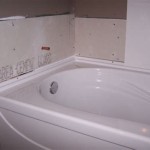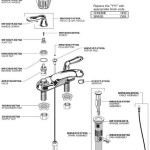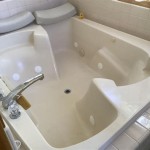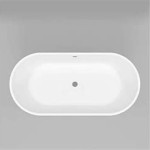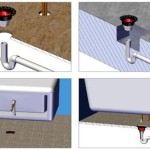Can You Install A Bathtub Surround Over Tile Walls?
The prospect of renovating a bathroom can often induce a mix of excitement and apprehension. One common area where homeowners seek to modernize and simplify is the bathtub or shower area. Existing tile walls, though durable, can sometimes appear outdated or require extensive repair, leading to consideration of a simpler solution: installing a bathtub surround. The question that frequently arises is whether a new bathtub surround can be installed directly over the existing tile walls. This article explores the feasibility of this approach, examining the potential benefits, drawbacks, preparation involved, and alternative solutions.
Bathtub surrounds are typically made from acrylic, fiberglass, or composite materials and are designed to create a watertight barrier within the bathing area. They offer an attractive and relatively easy-to-install alternative to traditional tile. The allure of installing a surround over existing tile stems mainly from the desire to avoid the messy and labor-intensive process of tile removal. Removing tile involves demolition, which can generate significant dust and debris and potentially damage the underlying wall structure if not handled correctly. Subsequently, the surface must be properly prepared before installing the new surround. Overlaying directly simplifies the installation process, potentially saving time and money.
Factors Influencing the Feasibility of Overlaying a Bathtub Surround
Several crucial factors dictate whether installing a bathtub surround directly over existing tile is a viable option. Ignoring these factors can lead to installation failures, water damage, and ultimately, more costly repairs in the long run.
Tile Condition: The condition of the existing tile is paramount. If the tiles are loose, cracked, or have significant grout deterioration, overlaying a surround is generally not recommended. Loose tiles create an unstable base, and the surround may not adhere correctly, leading to potential leaks and detachment. Extensive grout damage can also allow moisture to penetrate behind the tiles, exacerbating existing problems and potentially causing mold growth. Before considering overlaying, it's essential to inspect the tile meticulously and address any underlying issues. This might involve replacing loose tiles, repairing damaged grout, and ensuring the surface is structurally sound.
Wall Flatness: The flatness of the tiled wall is another critical consideration. Bathtub surrounds are designed to adhere to a relatively even surface. Significant unevenness or protrusions in the tile can create gaps between the surround and the wall, compromising the watertight seal and potentially causing stress cracks in the surround material. Before installation, it may be necessary to address irregularities by using patching compounds to smooth out any bumps or dips in the tile surface. Accurate leveling is essential to ensure a proper fit and long-term performance of the surround. A level should be used horizontally and vertically across the wall to identify any problem areas.
Surround Installation Requirements: The specific installation requirements of the bathtub surround itself also dictate whether overlaying is appropriate. Some surrounds are designed to be installed over a solid, flat surface, while others may be more forgiving of slight imperfections. Always consult the manufacturer's instructions to determine the recommended installation procedure and ensure that overlaying is compatible with the surround design. Ignoring these instructions can void the warranty and increase the risk of installation failure. The instructions typically detail the necessary preparation and adhesive recommendations.
Potential Benefits of Installing a Bathtub Surround Over Tile
While certain conditions must be met, there are potential benefits to installing a bathtub surround over existing tile, primarily reduced labor and time compared to complete tile removal and replacement.
Reduced Labor and Cost: The primary benefit is the reduction in labor and associated costs. Removing tile is a time-consuming and physically demanding task, often requiring specialized tools and skills. By overlaying a surround, a homeowner can potentially save on demolition costs and the labor involved in preparing the wall for new tile installation. The project timescale can also be significantly shortened. This makes the overlay method attractive for those on a tight budget and those looking for a quicker bathroom renovation.
Less Mess and Disruption: Tile removal is a notoriously messy process, generating a significant amount of dust and debris that can spread throughout the house. Overlaying a surround minimizes this mess and disruption, making it a more appealing option for those living in occupied homes. The reduced dust also benefits individuals with respiratory sensitivities or allergies. Furthermore, the cleanup process after installation is significantly easier when tile removal is avoided.
Improved Aesthetics: Even if the existing tile is structurally sound, it may simply be outdated or aesthetically unappealing. Installing a new bathtub surround can instantly modernize the bathing area and improve the overall appearance of the bathroom. Surrounds are available in a wide variety of colors, styles, and textures, allowing homeowners to choose a design that complements their existing décor. This provides a relatively quick and easy way to refresh the bathroom's look without undertaking a complete renovation.
Potential Drawbacks and Considerations
Despite the potential advantages, there are also significant drawbacks to consider before opting to install a bathtub surround over existing tile.
Potential for Moisture Problems: One of the most significant risks is trapping moisture behind the surround. If there are any existing leaks or if water penetrates the grout or cracks in the tile, it can become trapped between the tiles and the surround. This can lead to mold and mildew growth, which poses a health hazard and can damage the underlying wall structure. Proper ventilation in the bathroom is also important to prevent moisture buildup, even with a new surround. Regular cleaning and maintenance are essential to prevent water from seeping into vulnerable areas.
Reduced Adhesion and Longevity: The adhesion of the surround to the existing tile may be compromised compared to installing it on a clean, prepared surface. Over time, the adhesive can weaken, leading to gaps and potential leaks. The lifespan of the surround may also be reduced due to the underlying instability of the tiled surface. Investing in high-quality adhesive specifically designed for bonding to tile can help mitigate this risk, but it is not a guaranteed solution. The long-term performance of the surround is always better when installed on a properly prepared subsurface.
Increased Wall Thickness: Installing a surround over existing tile increases the overall wall thickness. This can affect the fit of existing fixtures, such as showerheads, faucets, and trim, and may require adjustments or modifications. In some cases, it may also reduce the usable space within the bathing area, albeit marginally. Careful measurements and planning are essential to ensure that the increased wall thickness does not create any unforeseen problems. It's also crucial to consider the impact on the overall aesthetic of the bathroom, as the increased thickness may alter the visual proportions.
Preparation Steps for Installing a Surround Over Tile
If, after careful consideration of the factors and potential drawbacks, installing a bathtub surround over existing tile seems like the appropriate choice, proper preparation is crucial. This involves a thorough inspection, cleaning, and repair of the existing tile surface.
Thorough Cleaning and Inspection: Begin by thoroughly cleaning the existing tile surface with a strong degreaser and mildew remover. Remove any soap scum, dirt, and grime that may prevent proper adhesion. After cleaning, carefully inspect the tile for any loose, cracked, or damaged areas. Pay close attention to the grout lines, as these are common areas for water penetration. Identify any areas that require repair or replacement.
Repairing and Replacing Damaged Tiles: Replace any loose or cracked tiles with new tiles of the same size and material. Use a high-quality tile adhesive to ensure a strong bond. Repair any damaged grout lines with new grout, ensuring that it is properly sealed to prevent water penetration. Allow the adhesive and grout to cure completely before proceeding to the next step.
Sanding and Leveling the Surface: Once the repairs are complete, lightly sand the tile surface to create a slightly rougher texture, which will improve the adhesion of the surround. Use a leveling compound to fill any dips or uneven areas in the tile surface, creating a smooth, flat base for the surround. Allow the leveling compound to dry completely before proceeding.
Alternative Solutions
If installing a bathtub surround over existing tile is not feasible or advisable due to the condition of the tile or other factors, there are alternative solutions to consider. These may involve more work but offer a more reliable and long-lasting outcome.
Tile Removal and Replacement: The most thorough solution is to remove the existing tile completely and install new tile. This allows for a clean slate and ensures a proper waterproof barrier. While this option is more time-consuming and expensive, it provides the best opportunity to address any underlying problems and create a beautiful and durable finish. It also allows for improved insulation and waterproofing behind the new tile.
Acrylic or Fiberglass Wall Panels: Instead of a full surround, consider installing individual acrylic or fiberglass wall panels. These panels are designed to be installed directly onto the wall studs and provide a seamless, waterproof surface. They offer a similar aesthetic to a bathtub surround but may be easier to install and customize. They also allow for greater flexibility in design and can be combined with other materials.
Refinishing or Painting the Existing Tile: If the primary goal is to update the appearance of the tile without undertaking a major renovation, consider refinishing or painting the existing tile. This involves cleaning, etching, and applying a specialized coating to the tile surface. While this is a less durable option than tile replacement or a new surround, it can provide a temporary and cost-effective solution. This option allows for customization of color and finish.

Installingtub Surround How To Install A Tub

The Complete Guide To Installing Tile On Shower Or Bathtub Walls
.jpg?strip=all)
Installing The Ceramic Tile Tub Surround My Old House Ibuildit Ca

How To Install A Bath Tub Surround

Bathtub Guide And Surrounds Make It Right

Part 1 How To Tile 60 Tub Surround Walls Preparation Where Start Tiling Layout

Tile Backer Board Installation 60 Bathtub Surround Walls For Part 1

How To Install A Bath Tub Surround

40 Unique Bathtub Tile Surround Ideas To Revamp Your Space

How To Install A Glue Up Shower Enclosure The Home Depot

